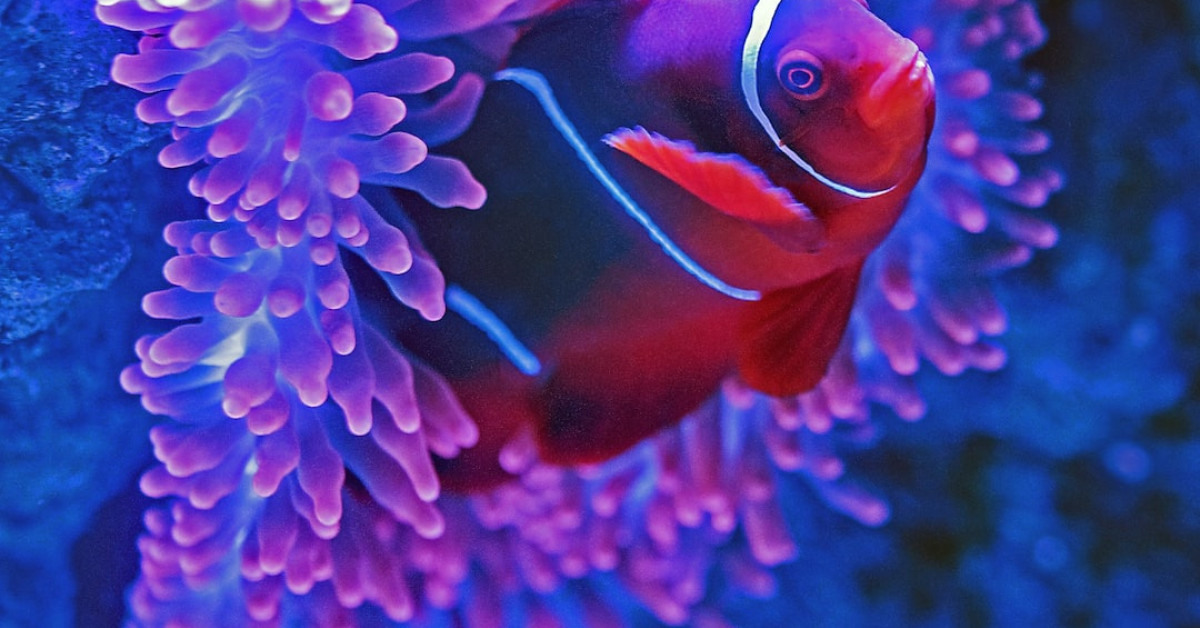Are you an avid diver who is constantly seeking new challenges and looking to enhance your diving experience? If so, mastering the art of underwater breath hold could be the game-changer you’ve been waiting for. The ability to hold your breath for extended periods of time opens up a whole new world of possibilities in the underwater realm, allowing you to explore deeper, stay submerged longer, and witness marine life in their natural habitat without the disturbance of bubbles. In this article, we will dive deep into the secrets of underwater breath hold, providing you with the knowledge and techniques to take your diving adventures to the next level.
Understanding the Importance of Breath Hold in Diving
Breath hold diving, also known as freediving, is a practice that dates back thousands of years. It has been an integral part of many traditional fishing and pearl diving cultures around the world. Today, freediving has evolved into a popular recreational activity and a competitive sport, attracting enthusiasts from all walks of life. But what makes breath hold diving so special?
The Benefits of Underwater Breath Hold
-
Enhanced Relaxation: Engaging in breath hold diving allows you to experience a heightened sense of relaxation and tranquility. By slowing down your breathing and immersing yourself in the underwater world, you can achieve a state of calm that is difficult to replicate in any other setting.
-
Improved Diving Efficiency: When you rely solely on your lung capacity for oxygen, you become acutely aware of your body’s movements and energy consumption. This heightened level of self-awareness helps to optimize your diving technique, resulting in improved efficiency and conservation of energy.
-
Closer Encounters with Marine Life: The absence of noisy scuba equipment allows you to move through the water silently, blending in with the environment and minimizing disturbances to marine life. This often leads to closer encounters with various underwater species, offering a more intimate and awe-inspiring experience.
-
Increased Depth and Dive Duration: As you train and improve your breath hold capacity, you will gradually be able to dive deeper and stay submerged for longer periods of time. This opens up a whole new world of dive sites and exploration opportunities that were previously out of reach.
Now that we understand the benefits of breath hold diving, let’s delve into the techniques and training methods that will help you unlock your full potential. 311 beautiful disaster lyrics youtube
Training Your Body and Mind for Underwater Breath Hold
-
Breathing Exercises
Mastering your breath is the fundamental building block of breath hold diving. Through regular breathing exercises, you can strengthen your diaphragm and increase your lung capacity, allowing you to hold your breath for longer durations. Here are some effective breathing exercises to incorporate into your training routine:
-
Diaphragmatic Breathing: Also known as belly or deep breathing, this technique involves inhaling deeply, allowing your diaphragm to expand, and exhaling fully, releasing all the air from your lungs. Practice this technique several times throughout the day to improve your lung capacity and oxygen efficiency.
-
CO2 Tolerance Training: Exposure to elevated levels of carbon dioxide (CO2) triggers the urge to breathe. By gradually increasing your tolerance to these sensations, you can extend your breath hold time. A simple exercise is to hold your breath for as long as possible and repeat this process multiple times during each training session. Over time, you will notice an improvement in your CO2 tolerance.
-
Mental Preparation
Breath hold diving requires not only physical fitness but also mental fortitude. The ability to remain calm and relaxed underwater is essential for prolonging your breath hold and maximizing your diving experience. Here are some strategies to mentally prepare yourself for underwater breath hold:
-
Visualization: Before each dive, take a few moments to visualize yourself being calm and in control underwater. Imagine the sensation of effortlessly gliding through the water, surrounded by marine life. Visualizing success helps to reduce anxiety and improve overall performance.
-
Meditation and Mindfulness: Incorporating meditation and mindfulness practices into your daily routine can help train your mind to focus and remain present. These practices enhance your ability to relax and avoid unnecessary thoughts or distractions while underwater.
-
Equalization Techniques
Equalizing the pressure in your ears and sinuses is crucial for safe and comfortable diving, regardless of whether you’re using scuba equipment or practicing breath hold diving. Here are a few techniques to help you equalize effectively during your breath hold dives:
-
Valsalva Maneuver: The Valsalva maneuver is the most commonly used equalization technique for both scuba divers and freedivers. It involves pinching your nose and gently exhaling against a closed airway, which helps equalize the pressure in your ears and sinuses. Practice this technique before and during your breath hold dives to prevent discomfort and potential ear injuries.
-
Frenzel Maneuver: The Frenzel maneuver is a more advanced equalization technique that involves using the back of the tongue to close off the airway while applying subtle movements of the throat muscles. This technique is particularly useful for deeper dives when the pressure differential becomes more significant.
Advanced Techniques for Extending Breath Hold Time
As you progress in your breath hold diving journey, you may find yourself wanting to extend your breath hold time further. Achieving longer breath holds requires not only improved physical fitness but also the implementation of advanced techniques and strategies. Here are a few methods to help you push your limits:
-
Packing and Hypercapnia
-
Packing: Packing refers to the technique of taking additional breaths and inhaling beyond your normal lung capacity to increase the oxygen stores in your body. This technique should only be practiced under proper guidance, as incorrect packing can potentially lead to lung injuries. Consult an experienced breath hold diving instructor to learn and master this technique safely.
-
Hypercapnia: Hypercapnia is the deliberate increase of carbon dioxide levels in the body before a breath hold dive. This technique, when used cautiously, can trigger the body’s natural response to a higher CO2 level, effectively allowing you to hold your breath for longer durations. It is essential to receive proper training and guidance before attempting to incorporate hypercapnia into your breath hold routine.
-
-
Relaxation and Body Control
-
Progressive Muscle Relaxation: Tension in the body consumes oxygen and adds unnecessary strain during breath hold dives. Progressive muscle relaxation involves systematically tensing and relaxing various muscle groups in the body, promoting overall relaxation and reducing oxygen consumption.
-
Breath Stacking: Breath stacking is a technique that involves taking several small breaths in succession, effectively filling the lungs to their maximum capacity. This method ensures that the lungs are fully inflated before your final breath before submerging, allowing for an extended breath hold time.
-
Streamlining and Hydrodynamics: Proper body positioning and streamlining underwater help reduce drag and conserve energy. By practicing hydrodynamic techniques such as body alignment, hydrodynamic kicking, and controlled movements, you can improve your efficiency and extend your breath hold time.
-
Practical Applications of Underwater Breath Hold
Once you have developed a solid foundation in breath hold diving, you can explore a variety of practical applications and specialized diving disciplines that incorporate breath hold techniques. Here are a few examples:
-
Spearfishing
Spearfishing combines the thrill of hunting with the beauty of underwater exploration. With proper breath hold training, you can become a formidable underwater hunter, relying on stealth, precision, and breath hold capabilities to catch your prey. Always ensure you comply with local regulations and practice ethical and sustainable spearfishing techniques.
-
Underwater Photography and Videography
Breath hold diving allows you to get up close and personal with marine life, providing unique opportunities for capturing stunning underwater photographs and videos. The absence of bubbles from scuba equipment offers an extra advantage, ensuring you won’t startle or disturb the marine subjects you wish to document.
-
Competitive Freediving
For those seeking the thrill of competition, competitive freediving offers an exhilarating platform to test your breath hold limits. Disciplines such as static apnea (holding your breath while floating motionless), dynamic apnea (swimming horizontally underwater), and depth diving challenge divers to push their boundaries and strive for personal bests.
Safety Considerations and Training Resources
While breath hold diving can be a rewarding and transformative experience, it is crucial to prioritize safety at all times. Never push yourself beyond your limits, and ensure you receive proper training from certified freediving instructors before attempting more advanced techniques. Here are some additional safety considerations and resources to help you on your breath hold diving journey:
-
Buddy System: Always dive with a buddy who understands breath hold techniques and can assist in case of an emergency.
-
Proper Equipment: Invest in high-quality snorkeling gear, including a well-fitting mask, snorkel, and fins. However, keep in mind that additional equipment, such as specialized wetsuits and weight belts, may be required for more advanced breath hold diving.
-
Training Courses and Certifications: Enroll in accredited freediving courses to learn the necessary skills, theory, and safety protocols. Organizations like AIDA (International Association for Development of Apnea) and PADI (Professional Association of Diving Instructors) offer comprehensive freediving courses and certifications.
-
Continuous Practice and Progression: Breath hold skills require consistent practice and gradual progression. Never attempt advanced breath hold techniques without the necessary experience and guidance.
In conclusion, mastering the art of underwater breath hold can unlock a whole new level of exhilaration and exploration in your diving adventures. By understanding the benefits, training your body and mind, and implementing advanced techniques, you can extend your breath hold time, improve your diving efficiency, and create unforgettable underwater experiences. Remember to prioritize safety, seek proper training, and always dive within your limits. So take a deep breath, dive in, and embrace the secrets of underwater breath hold for ultimate diving adventures.










